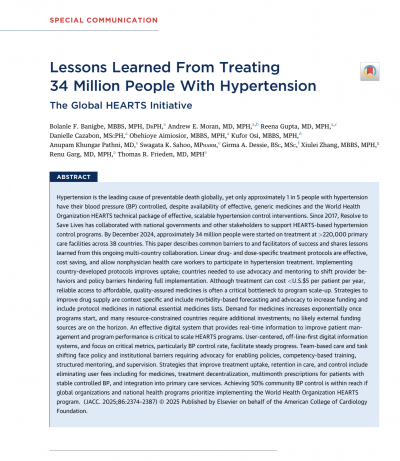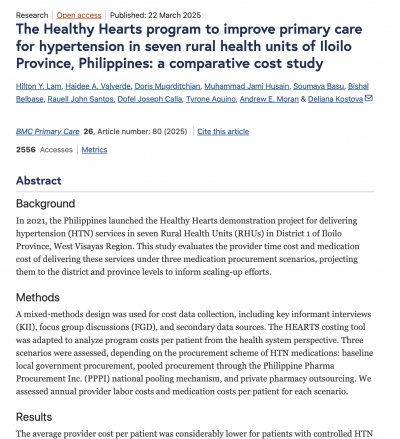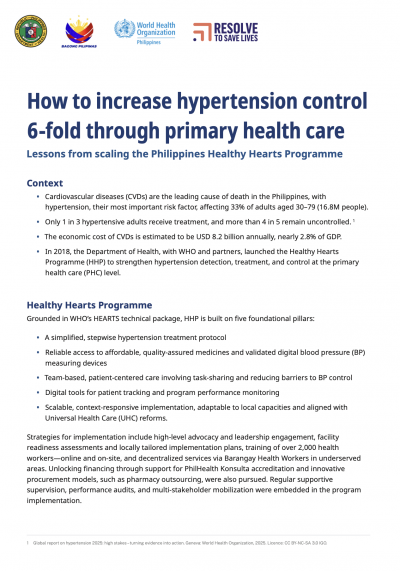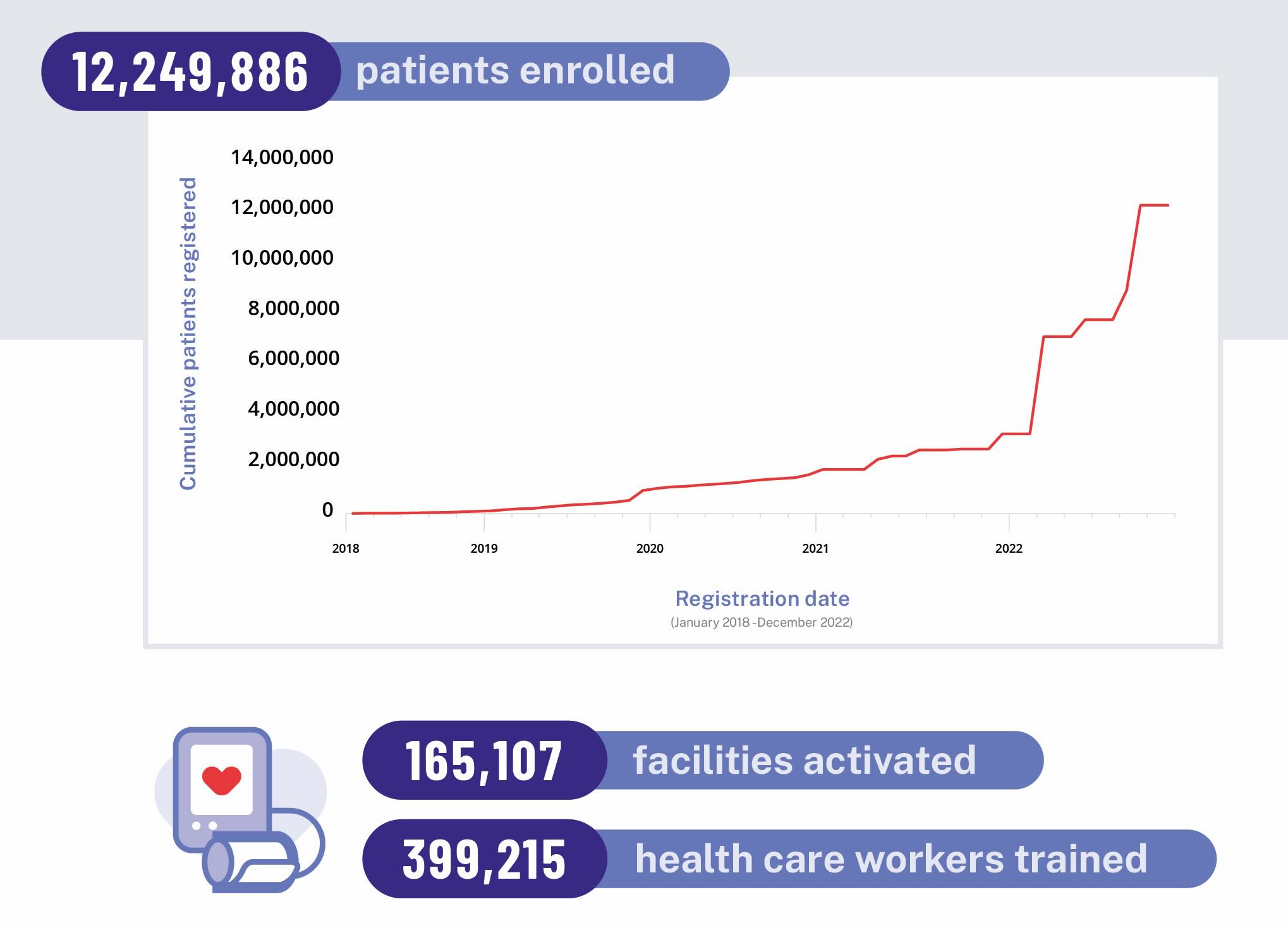Reliable access to essential medicines for high blood pressure
Reliable access to essential medicines
Making life-saving blood pressure medicines available when and where patients need them at prices they can afford.
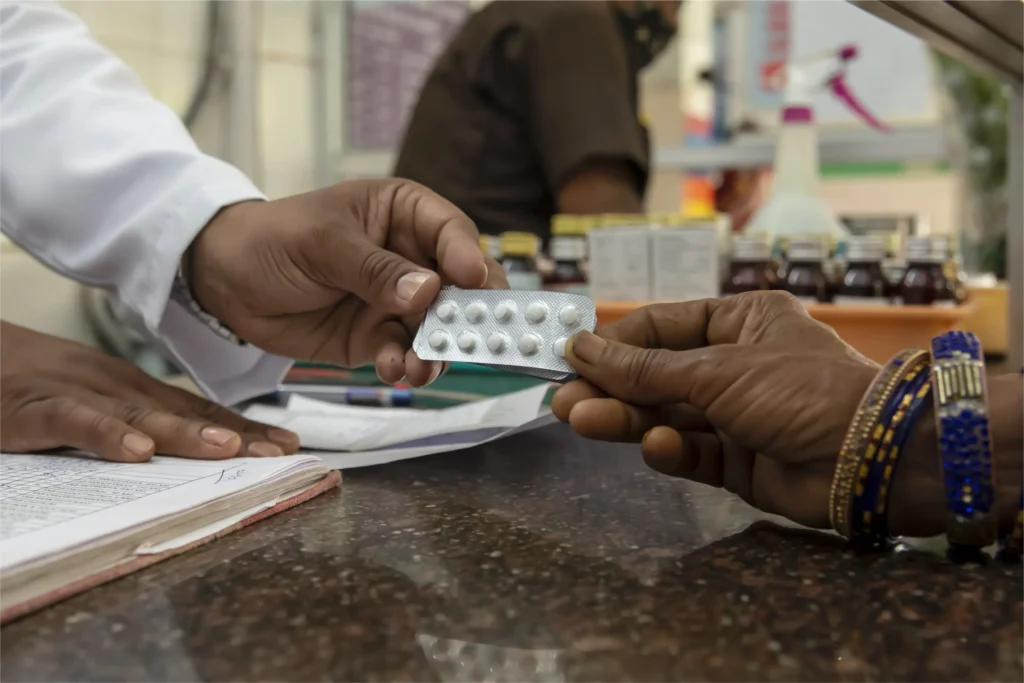
The challenge
The solution
The impact
Explore
In Nigeria, this pilot program is making blood pressure treatment affordable for all
A self-sustaining drug revolving fund reduced costs and improved availability of key blood pressure drugs to control high blood pressure.
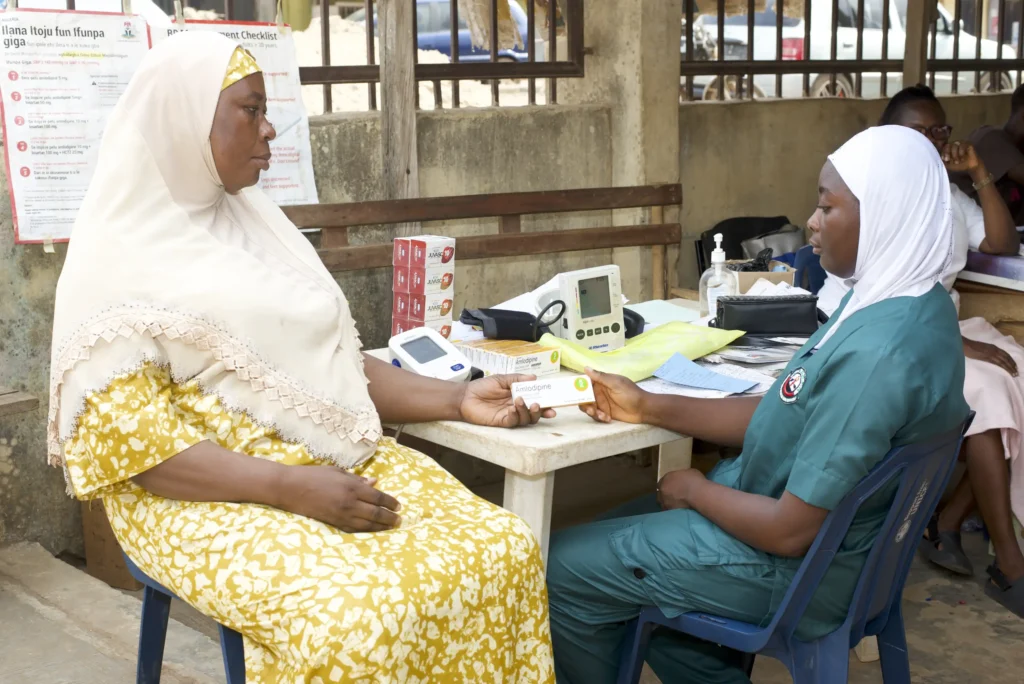
New analysis shows eliminating out of pocket costs for blood pressure medication saves lives
Resolve to Save Lives and partners found that removing patient copayments reduces risk of heart attack, stroke, and hospitalization
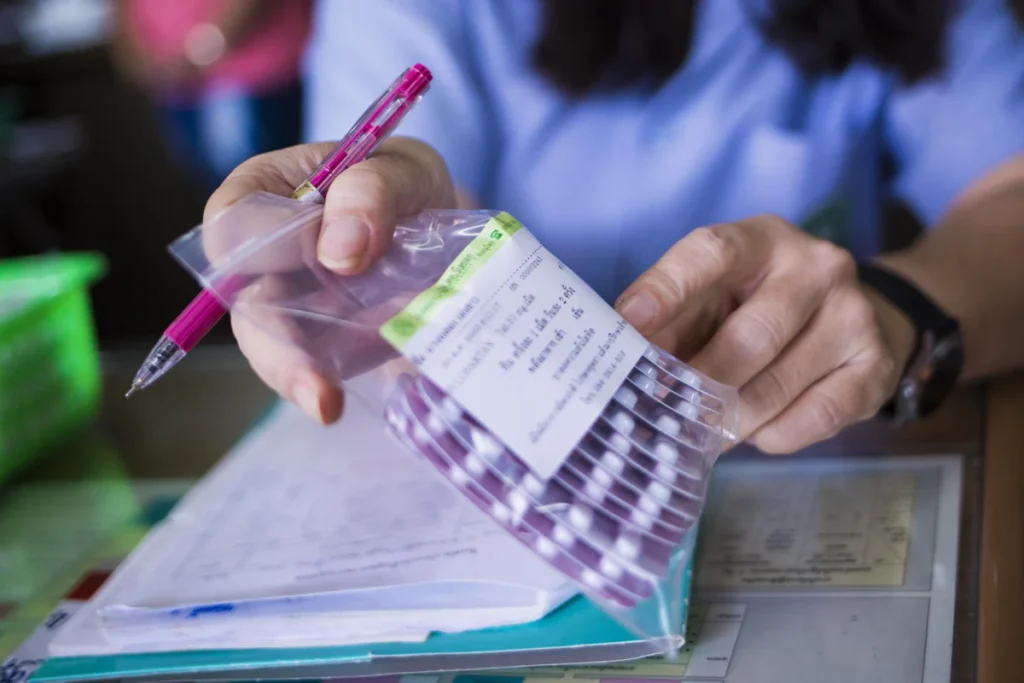
Putting life-saving blood pressure control medication within reach
Our report on strategies to improve access to medicines to treat high blood pressure in low- and middle-income countries
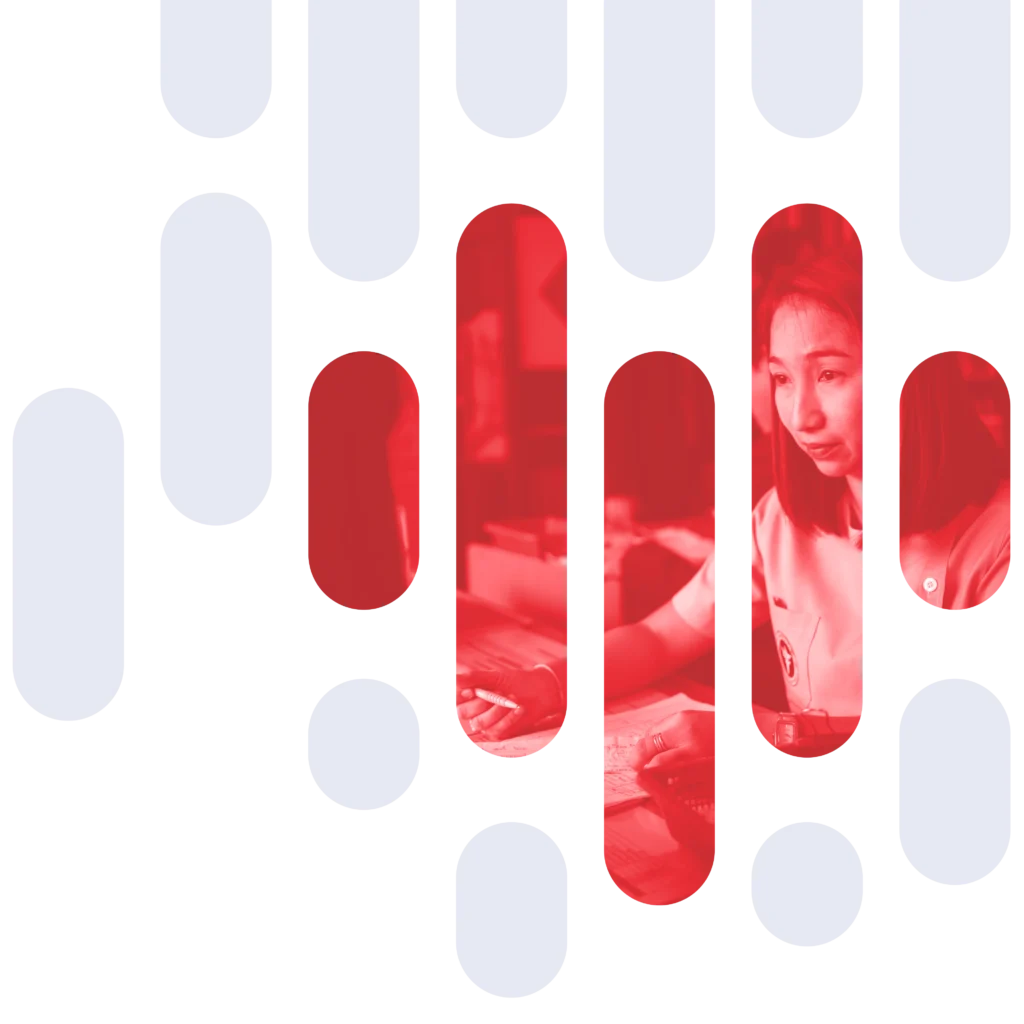
Partners
World Health Organisation (WHO)
Benchmarks for health emergencies
We partner with the World Health Organization to standardize best practices for preparedness, including developing a benchmarking tool to simplify and accelerate preparedness planning under International Health Regulations.
The cost of health care worker infections
In our advocacy efforts to protect health care workers, we released a joint report with the World Bank to calculate the true cost of health care worker infections during the COVID-19 pandemic, as well as wider socioeconomic implications.
In depth
How access to blood pressure medication saves lives
High blood pressure can be controlled with medication—but for it to work, patients must take it consistently, every day, for life. When medications are unaffordable, or are not consistently available, blood pressure control drops, often with deadly consequences.
Why are blood pressure medicines out of reach for so many people?
Around the world, the cost of blood pressure-lowering medicines can be surprisingly high. Prices can vary dramatically between countries, and even within regions.
Market fragmentation, inconsistent prescribing practices, and lack of dedicated funds make it difficult to purchase enough stock or forecast future demand. This drives prices up and leads to drug shortages, often leaving patients without the medicine they need to prevent sudden heart attacks and strokes.
How we support access to medicines and technology
We support countries to target both availability and affordability of anti-hypertensive medicines.
Inclusion in the essential medicines list
We advocated fiercely and succeeded in getting easier-to-take blood pressure medicines on WHO’s Essential Medicines List. Including blood pressure medications on national lists opens the doors for clinicians to prescribe them, states and programs to purchase them, and insurance plans to cover them.
Drug revolving funds
Drug revolving funds are a self-sustaining funding mechanism that start with an initial seed fund and use profits from medication sales to purchase more medications. At the state and national level, they increase purchasing power, which keeps medication costs down and improves availability. We have provided seed funding and technical assistance to both integrate hypertension medications into into existing drug revolving funds and to start new revolving funds for antihypertensives. We also provide technical assistance to strengthen the governance of drug revolving fund mechanisms, so they can be sustainable in the long term.
Good manufacturing practice audits
Locally manufacturing hypertension medicines can reduce costs, especially in countries where importing medicines is expensive. The World Health Organization’s Good Manufacturing Practice (GMP) standards ensures that locally-produced medicines are top quality. We support GMP audits of medicine manufacturers, which determine whether manufacturing processes and procedures comply with WHO GMP standards, and support manufacturers to develop plans to reach the standard.
Advanced forecasting
A steady supply depends on accurately forecasting how much of a medicine will be needed in a given time period. For a rapidly expanding hypertension control program, traditional methods— which base predictions for demand on past consumption—don’t work. RTSL developed a simple, user-friendly, adaptable tool that uses patient load to forecast the quantity of a medicine that a hypertension program will need—helping programs understand how much medicine, and budget, they need to grow.
Supporting access to technology
We need good data to make life-or-death decisions about blood pressure management. Inaccurate blood pressure readings can leave patients vulnerable to heart attack and stroke.
Validated automated blood pressure devices reduce human error and make it possible to manage blood pressure at the primary care level—where more people get care. RTSL supports hypertension control programs to use these monitors widely, ensuring accurate blood pressure measurement every time.
